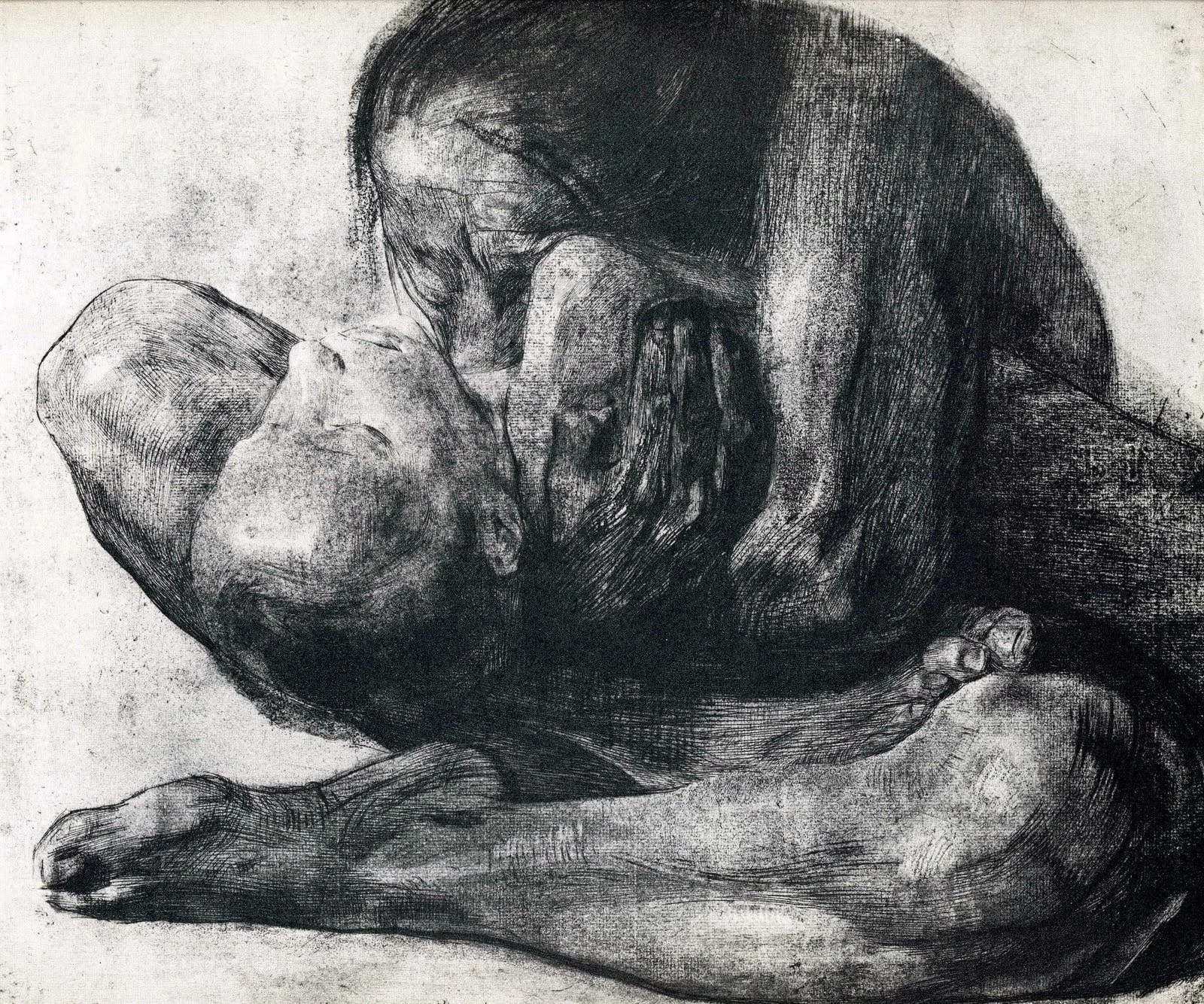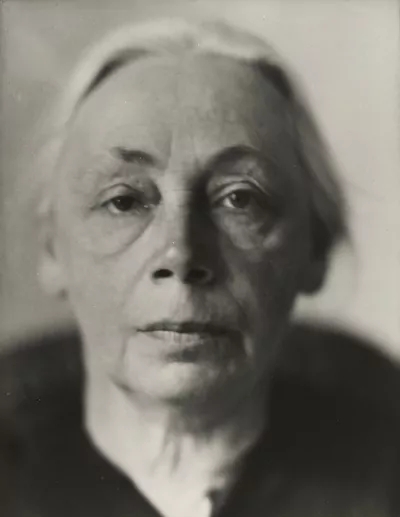

Käthe Kollwitz
Printmaker & social activist
1867 – 1945[Editor’s note: Kollwitz kept a diary, which she wrote in off and on for a number of years. The following selections are from 1909-1911, when she was in her early thirties, already with two kids. She feels old, and struggles with inspiration. Her journals paint a picture of a throughful, analytical artist melancholic by nature, and in a distance relationship with both her family and her work.]
I looked at some Durer drawings of hands in the print collection. Except for a very few things I am no longer so overwhelmed by Durer. His stroke is distasteful to me, and so is his excessively subjective feeling for form.
Last night I was invited to a session of a group who wanted to renew the project for holding the “juryless” show. It was interesting meeting P . . . , Kober and two other boys who had been refused by the Secession. Their work meant nothing to me; I thought it all talented smears such as any gifted academy student can turn out. But they think themselves future Manets. P. said: I don't give a hoot about a juryless show, I’ll make my own way, and so on. Now I already belong to the older generation, to those who are blocking the way and taking the light from the youth. It is interesting, this eternally rising wave of the youngest youths. They can-not be understood by the more mature artists and by those who have technique and craftsmanship, for they almost never possess any special superiority. All their superiority lies in the young people’s imagination. And yet youth has the right to see itself in this highly imaginative future light, just as the no-longer-young have the right to smile at the illusory values of the young and to turn away from them to their maturer concerns.
I am gradually approaching the period in my life when work comes first. When both the boys went away for Easter, I hardly did anything but work. Worked, slept, ate and went for short walks. But above all I worked. And yet I wonder whether the “blessing” is not missing from such work. No longer diverted by other emotions, I work the way a cow grazes; but Heller once said that such calm is death. Perhaps in reality I “accomplish” little more. The hands work and work, and the head imagines it is producing God knows what; and yet formerly, in my so wretchedly limited working time, I was more productive because I was more sensual; I lived as a human being must live, passionately interested in everything. Now I am working on the second plate of Death. Sometimes, infatuated with my work, I think I am far surpassing myself. But after a two-hour pause—where is the stroke of genius? Then there seems to me nothing special about what I have done. That torments me. Potency, potency is diminishing.
I imagine the following sculpture as utterly beautiful: a pregnant woman chiseled out of stone. Carved only down to the knees so that she looks the way Lise said she did the time she was pregnant with Maria: “As if I am rooted to the ground.” The immobility, restraint, introspection. The arms and hands dangling heavily, the head lowered, all attention directed inward. And the whole thing in heavy, heavy stone. Title: Pregnancy.